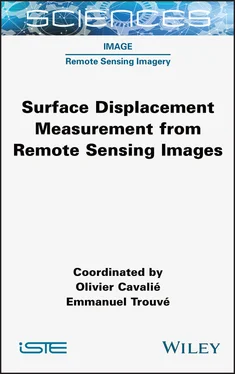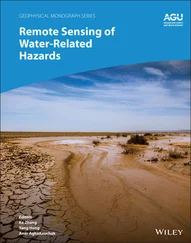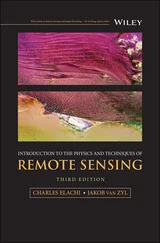Launch is foreseen in 2023 in Kourou on a Vega launcher to put Biomass on a dawn–dusk sun-synchronous orbit about 600 km high.
The Copernicus L-band ESA SAR Sentinel-1–2 radar mission, named ROSE-L (Radar Observing System for Europe), provides enhanced continuity for a number of Copernicus services and downstream commercial and institutional users. It should be launched in 2028 and will work in synergy with other Copernicus elements to specially address emergency management service requirements. It should offer the same coverage and same frame as Sentinel-1 (swath widths around 250 km) to exploit synergy with a repeat coverage of less than one day in Arctic areas, three days in Europe and six days everywhere using two satellites (Pierdicca et al . 2019). Spatial resolution is expected to be better than 5 m x 10 m.
Data access: The main characteristics of the ROSE-L mission, dedicated to operational services, include reliability, data timeliness, a European free and open data policy, systematic acquisitions, a reduction in the number of payload modes and coordinated operations with Sentinel, and these distinguish ROSE-L from the other SAR mission initiatives.
1.4. Optical imaging missions
1.4.1. Past optical missions
In this section, we present some optical satellites that have taken images that are considered as references today. These satellites were launched between 1984 and 2004. Most of them are inactive today (but not all of them). Such satellites were heavy, and many of them had considerable longevity. At the beginning of the 2000s, new satellites arrived, such as Ikonos and Quickbird-2: these were agile satellites, with submetric resolution and increased dynamic range. For various satellites, several parameters, such as altitude, local time, weight, year of launch, spatial resolution, panchromatic spectral range and swath, are given in Tables 1.6and 1.7. As we focus on ground motion displacement measurements and DEM extraction, the highest spatial resolution (panchromatic band in general), with its corresponding swath, is given.
Table 1.6. Past mission characteristics and parameters
| Satellite |
Nation |
Altitude (km) |
Local time |
Period of orbit (min) |
Inclination (deg) |
Weight (kg) |
| Landsat 5 |
USA |
705 |
9:45 |
99 |
98.2 |
2,200 |
| SPOT-1 |
France |
822 |
10:30 |
- |
- |
1,907 |
| SPOT-2 |
France |
822 |
10:30 |
- |
- |
1,907 |
| SPOT-3 |
France |
822 |
10:30 |
- |
- |
1,907 |
| SPOT-4 |
France |
832 |
10:30 |
- |
- |
2,755 |
| Landsat 7 |
USA |
705 |
10:00 |
99 |
98.2 |
1,973 |
| Terra ASTER |
USA–Japan |
705 |
10:30 |
98.88 |
98.3 |
4,864 |
| Ikonos |
USA |
681 |
10:30 |
- |
- |
817 |
| Quickbird-2 |
USA |
460 |
10:30 |
93.5 |
97.2 |
1,100 |
| SPOT-5 |
France |
822 |
10:30 |
101.4 |
98.7 |
3,030 |
| CBERS-2/2B |
China–Brazil |
778 |
10:30 |
100.26 |
98.5 |
1,450 |
| Formosat-2 |
Taiwan |
888 |
9:30 |
- |
99.14 |
764 |
Table 1.7. Past mission instrument characteristics
| Satellite |
Year of launch |
End of life |
Highest spatial resolution (m) |
Panchromatic spectral range (nm) |
Number of XS bands |
Swath width for highest resolution (km) |
Dynamic range (bits) |
| Landsat 5 |
1984 |
2013 |
30 |
- |
11 |
185 |
- |
| SPOT-1 |
1986 |
2003 |
10 |
500–730 |
3 |
60 |
8 |
| SPOT-2 |
1990 |
2009 |
10 |
500–730 |
3 |
60 |
8 |
| SPOT-3 |
1993 |
1996 |
10 |
500–730 |
3 |
60 |
8 |
| SPOT-4 |
1998 |
2013 |
10 |
510–730 |
4 |
60 |
8 |
| Landsat 7 |
1999 |
- |
15 |
520–900 |
7 |
185 |
8 |
| Terra ASTER |
1999 |
- |
15 |
- |
15 |
60 |
8 |
| Ikonos |
1999 |
2015 |
0.82 |
450–900 |
4 |
11.3 |
11 |
| Quickbird-2 |
2001 |
2015 |
0.65 |
450–900 |
4 |
18 |
11 |
| SPOT-5 |
2002 |
2015 |
2.5 |
480–710 |
4 |
60 |
8 |
| CBERS-2/2B |
2003,2007 |
2007,2010 |
20 |
510–730 |
4 |
113 |
- |
| Formosat-2 |
2004 |
2016 |
2 |
450–900 |
4 |
24 |
8 |
In the following, some optical satellites are presented to illustrate their interest for surface displacement measurement using archive satellite imagery:
– Landsat 5: Landsat 5 delivered Earth imaging data for nearly 29 years and set the Guinness World Record for the “longest operating Earth observation satellite”. Its longevity provides a reference for time-series analysis of the Earth.
– SPOT-1: A commercial high-resolution optical satellite initiated by CNES in the 1970s. Since 1986, the SPOT family has taken more than 10 million high-quality images, which constitute reference data.
– SPOT-4: The second generation of the SPOT satellites. The panchromatic band is associated with four multispectral (XS) bands at 20 m resolution. The platform is three-axis stabilized, and the viewing direction is selected with a mirror.
– Landsat 7: This satellite, launched in 1999, is considered a high-accuracy calibrated Earth-observing satellite. Its radiometric measurements are accurate compared to the same measures made on the ground. In October 2008, the USGS made all Landsat 7 data free to the public. It led to a 60-fold increase of data downloads. The satellite is still active in 2020.
– ASTER: The ASTER instrument on the Terra satellite creates a detailed map of land surface, and scientists have made an elevation model with this data. The first global digital elevation model (GDEM) was released to the public in 2009. It covers the polar regions and complements NASA’s SRTM. The spatial resolution of pixels of 15 m is conducive to the creation of a 30 m resolution DEM. The last version of the ASTER DEM was released in 2019. Since 2016, all satellite images have been available at no charge for all users. The satellite was still active in 2020.
– Ikonos: Ikonos was a breakthrough among the commercial satellites. The whole platform is used to point towards a geographical region. The whole satellite is agile and, consequently, the satellite weight is reduced. Commercial images with submetric resolution are available. The dynamic range of images is increased.
– Quickbird-2: Quickbird-2 features enhanced commercial spatial resolution. It is the highest-resolution commercial satellite to date.
– SPOT-5: Third-generation satellite of the SPOT family operated by Spot Image. It takes 2.5 m panchromatic images and 10 m multispectral ones. Pointing is done with steering mirrors. The HRS instrument is composed of two telescopes pointing around 20° forward and backward. The HRS takes native stereoscopic images with a resolution of 5 m (along track) × 10 m (across track).
Читать дальше












